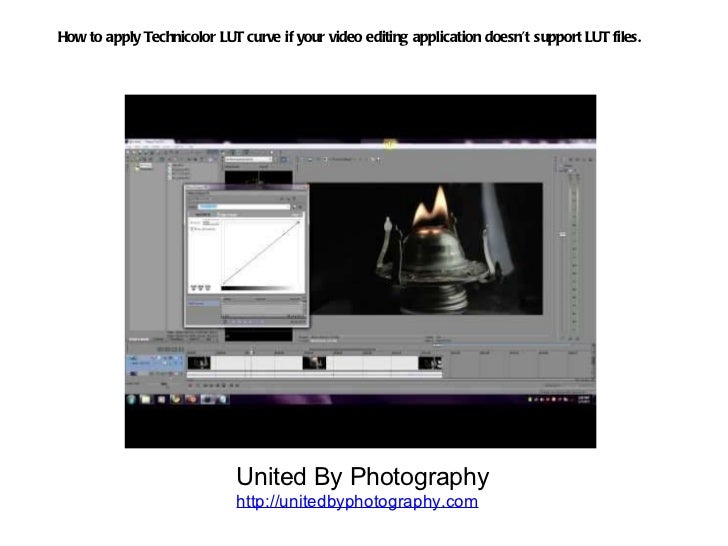

- #Technicolor cinestyle lut premiere how to#
- #Technicolor cinestyle lut premiere full#
- #Technicolor cinestyle lut premiere software#
So, when you use a LUT for monitoring purposes on set, to show your client what the footage will look like after post-production, make sure you don’t “bake-in” the image onto the Log footage in camera or via your monitor. However, If not used carefully, improper LUT use could screw up your footage or limit your image manipulation options later in post. LUTs are also a great solution for those who want to see in real time on a field monitor more saturated images on set during shooting. Whether you use Blackmagic Cinema Camera, Canon, RED, Sony or an ARRI Alexa, using this plugin will instantly show your footage with true exposure and colours. The only thing you should keep in mind is to shoot Log on your camera. The plug-in comes with the folowing LUTs: In addition, LUT Utility allows you to apply film print LUTs to accurately emulate different film stocks and film processes. LUT Utility allows FCP X users to apply LUTs to Log exposed images from: Arri Log C, Blackmagic Camera Film, Canon C-Log, RED Filmlog, Sony S-Log, Technicolor Cinestyle and any other flat Log picture profile from cameras including Nikon and Panasonic. Any flat looking image can benefit with the right LUT applied. This is not an effect wrapped template, it’s a fully coded plugin that also works in Motion and even loads up its own system settings. You can use LUT Utility , a clever $29 plugin and application that automatically converts flat picture styles to the correct grade in FCPX such as REC709. If you are Final Cut -X user, you also have a simple option to apply look-up tables to your footage. As a rule-of-thumb, Casey Faris suggests to colour correct your footage in the first place and to apply a certain LUT after. Using the build-in Lumetri Effect in Premiere CC on a separate video channel is certainly a smart decision to apply look-up tables to your footage.
#Technicolor cinestyle lut premiere full#
He applies a couple of colour look-up tables to the footage he shot on BMPCC, however the suggested workflow is relevant and could be applied to any other footage as long as the video files we use are captured in Log mode with the full dynamic range of the camera.
#Technicolor cinestyle lut premiere how to#
In this video tutorial Casey Faris will give us some basic ideas on how to use different LUTs in Adobe Premiere CC.
#Technicolor cinestyle lut premiere software#
However, if you want to achieve professional results, using dedicated colour grading software solutions such as Davinci Resolve, Color or Speed Grade and applying some basic primary and secondary colour corrections to your footage before delivery is still a must. You can use LUTs to give you clients or your collaborators an idea and some initial thoughts on how your footage would look like once delivered.


The hardware colour look-up table will convert the logical colour (pseudo-colour) numbers stored in each pixel of video memory into physical colours, normally represented as RGB triplets, that can be displayed on a computer monitor. It can be a hardware device built into an imaging system or a software function built into an image processing application. The definitions of a Colour Look-Up Table (LUT):Ī colour look-up table (CLUT) is a mechanism used to transform a range of input colours into another range of colours. What is a colour look-up table and how do we use it in practice? Many people still do believe that applying a LUT to the image is like applying another preset in your NLE. There is a common misunderstanding about the colour look-up tables, or in short LUTs.


 0 kommentar(er)
0 kommentar(er)
